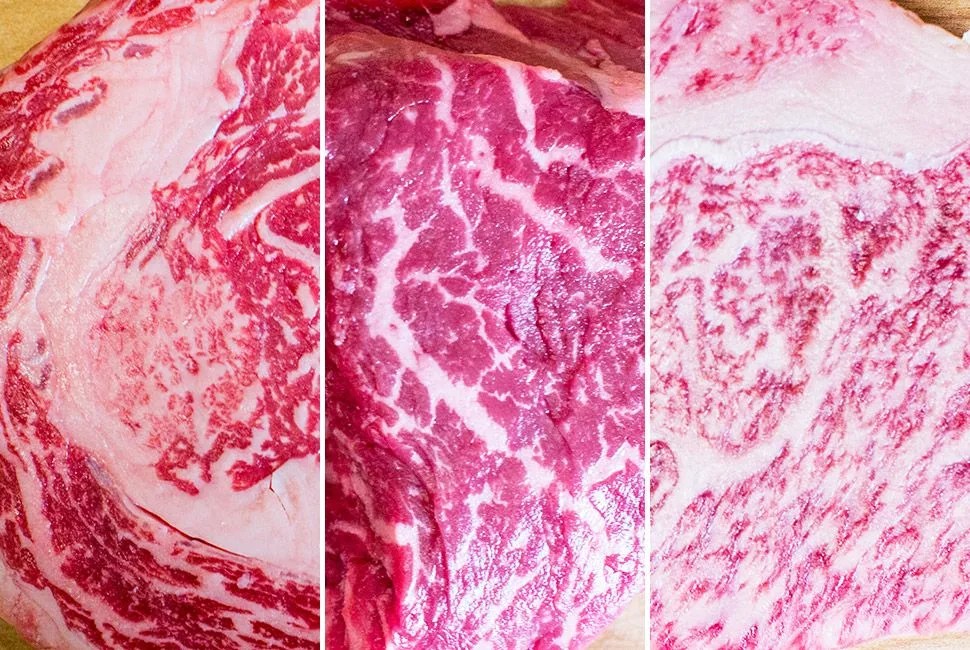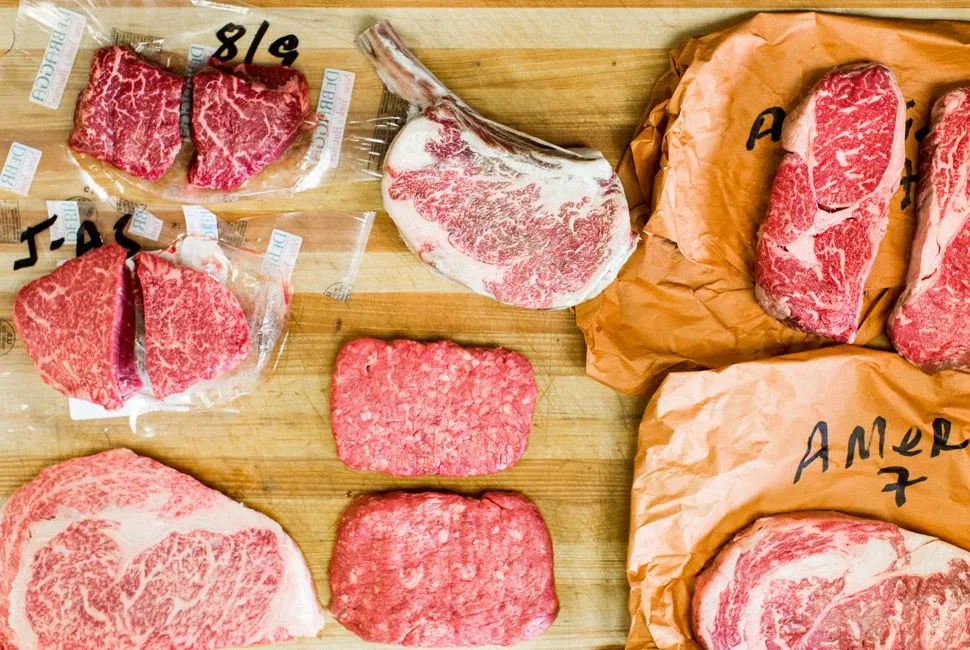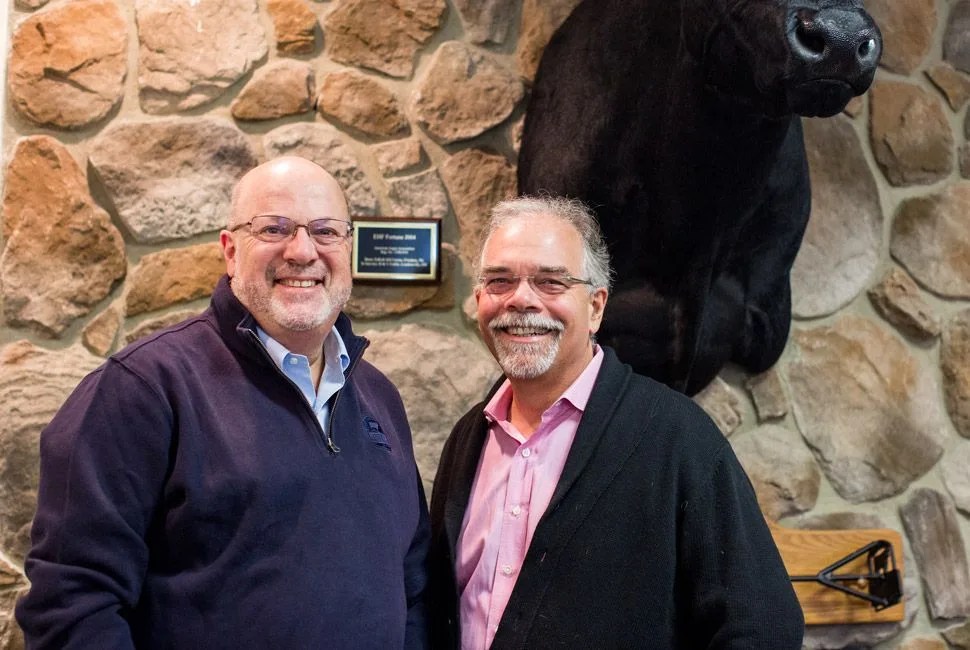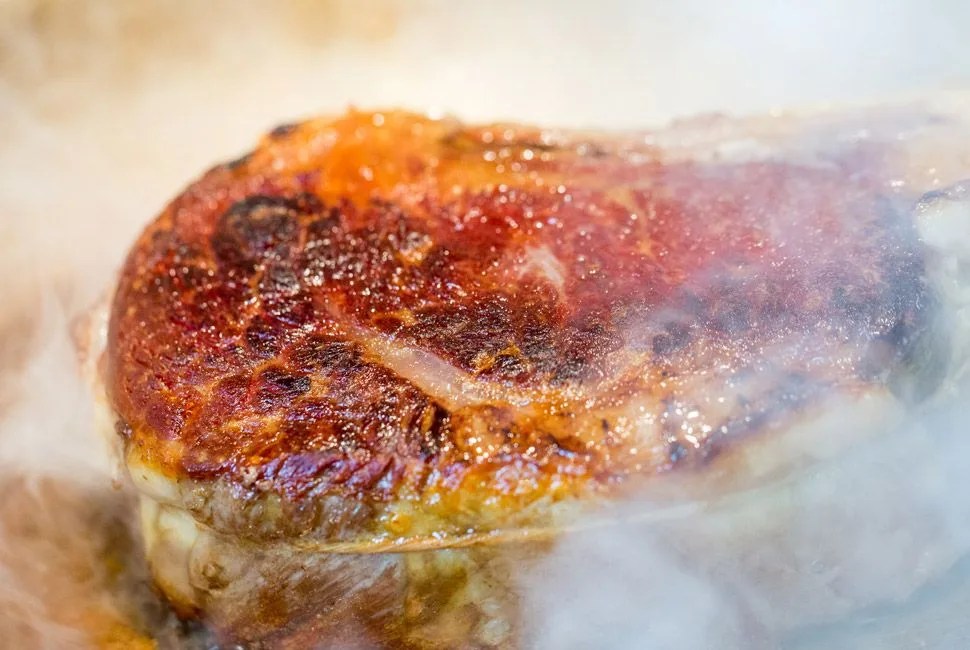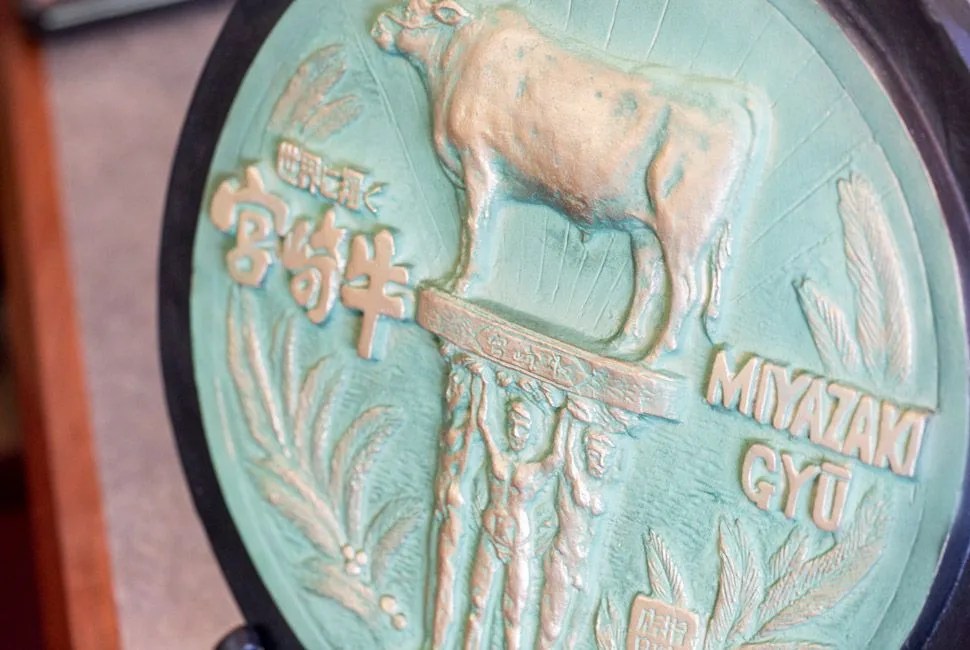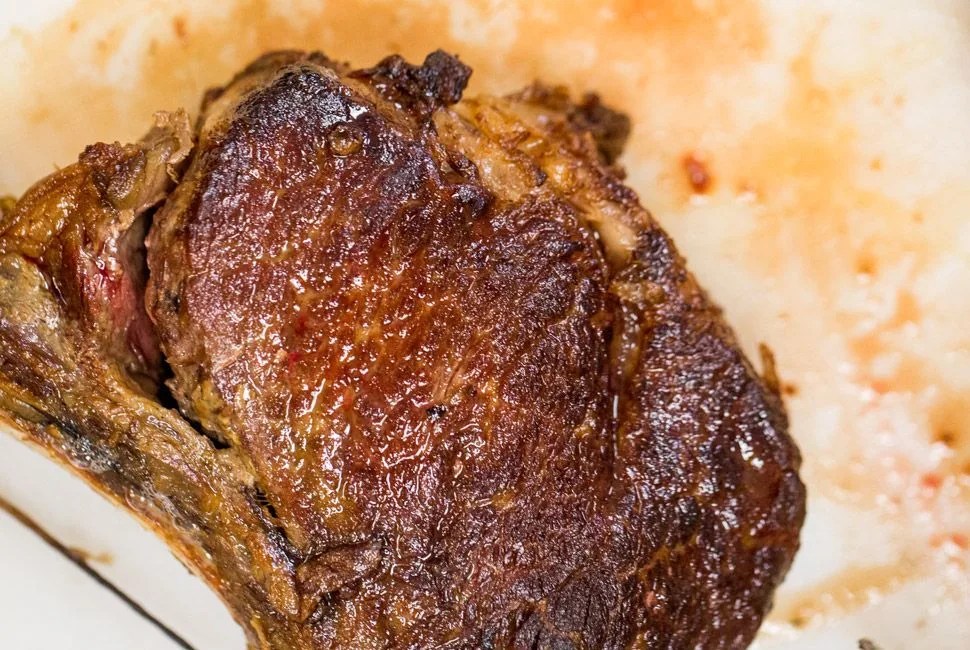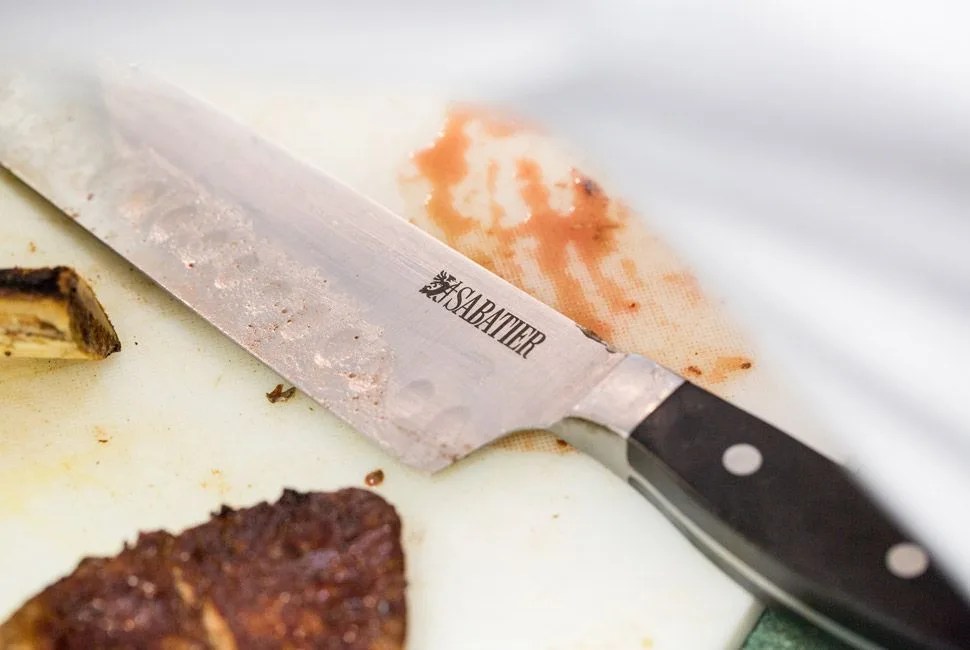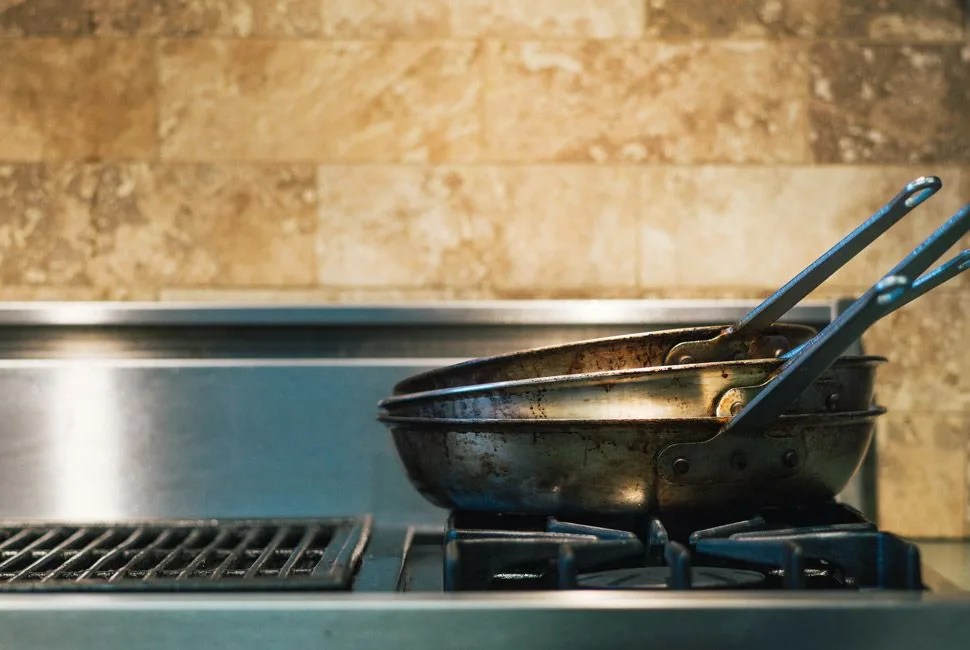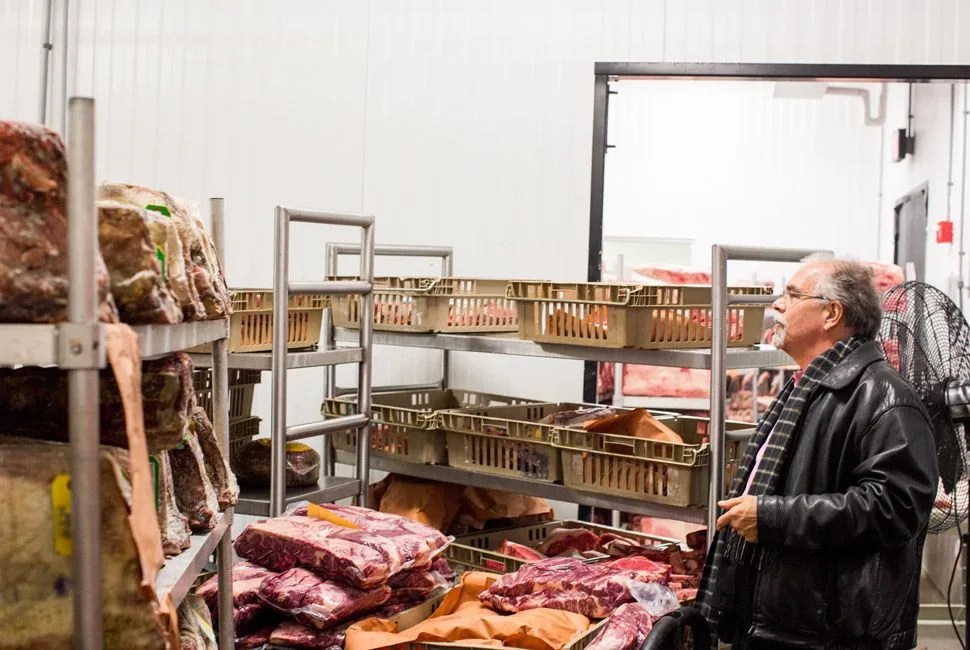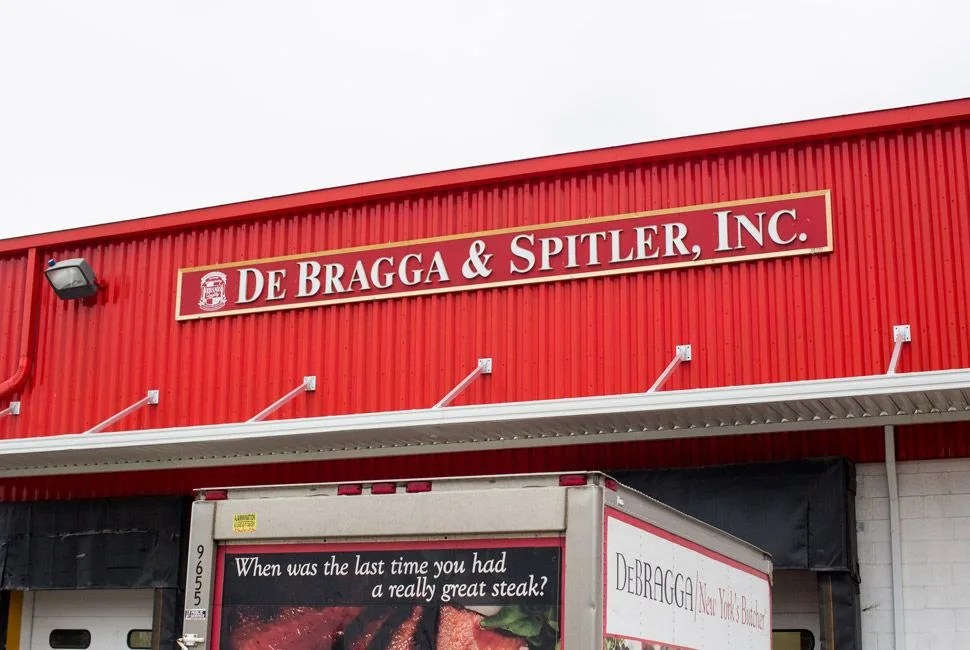In the March of 2014, George Faison stood at a breeding farm in Miyazaki, a coastal prefecture on Japan’s southernmost island, looking out over a Wagyu feedlot. Dressed in a white coat, blue booties and a hairnet, he examined the massive black Japanese bulls from the other side of a clear dividing wall. He was there because he had read an article by Barry Estabrook disparaging the husbandry practices of Kobe beef, a close relative to Miyazaki Wagyu, so he decided to inspect the farm himself, in person. Faison was hired in the fall of 2006 to reinvigorate Debragga & Spitler, a meat wholesaler based in New Jersey. These bulls were part of that effort, so he wasn’t taking any chances.
Only 18 months prior, Wagyu meat was legally allowed back in the US. The government instituted a three-year ban on imports after an outbreak of foot-and-mouth disease in Japan. When the ban lifted, only three distributors in the US received contracts to import the Miyazaki Wagyu, and Debragga was one of them. This was a huge deal; the Wagyu from Miyazaki has held the title at the National Wagyu Competition in Japan, the “Wagyu Olympics”, for the past 10 years. It’s the best Wagyu, and Wagyu is considered by most to produce the best beef money can buy.
Unfortunately, as Faison told me when I visited him earlier this year, it’s hard to convince people of this. Take, as an example, Kobe beef. Kobe beef is a strain of Wagyu cattle, named after the location in which the beef is raised, like Champagne or Scotch. But unlike with alcohol, there are no rules against labelling anything Kobe, or Kobe-style. The moment Kobe became synonymous with quality, sellers began slapping the name on anything to increase sales. The word Kobe became meaningless. For the same reason, Wagyu, like real Kobe, has little ability to distinguish itself in the domestic marketplace. But Faison is trying to change that.
Wagyu means literally “Japanese cattle”. DeBragga, in its squat gray headquarters in Jersey City, which overlooks the One World Trade Center, carries three versions of the breed. The American Wagyu — the result of Wagyu cattle crossbred with Angus cattle — is redder and beefier tasting, which American palates prefer. The Australian Wagyu — which is Wagyu cattle crossbred with Holstein cattle — maintains a more tender, fattier meat, which Australians then sell in the far east, including back to Japan. And then there’s Japanese Wagyu, the holy grail, which can be sold for hundreds of dollars a pound.
For reference, in May of 2015, 2.38 million cattle were slaughtered in the US. That’s just over 537,000 a week for burgers, hangers, ribeyes, ribs, chuck, shoulder, filet mignon and whatever else can fit on a grill. For Japanese Wagyu, the number of cattle slaughtered every week comes out to about 1,500. And in America, according to Faison, the Wagyu Angus cross amounts to only 500 slaughtered animals each week. The costs associated with raising Wagyu make it expensive and hard to find, but for those that do cook it, it’s analogous to watching tennis live when you only ever watched on TV, or replacing a faulty bass driver on a speaker you didn’t know was busted; you don’t know you missing something, until you’ve had the marbling.
“The marbling is the single most important indicator of the eating experience. It’s correlated with tenderness and flavor on the palate,” said Marc Sarrazin, president of DeBragga Meats since 1992, before adding, simply: “Fat is flavor.” This marbling shows up as white intermuscular fat, spiderwebbed throughout the pink muscle fibers. When cooked, this fat helps the meat maintain its buttery quality, both in taste and consistency. It’s meat that melts on the tongue. You could eat it with a spoon.
